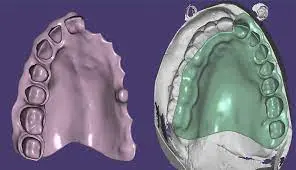- Home
- Medical news & Guidelines
- Anesthesiology
- Cardiology and CTVS
- Critical Care
- Dentistry
- Dermatology
- Diabetes and Endocrinology
- ENT
- Gastroenterology
- Medicine
- Nephrology
- Neurology
- Obstretics-Gynaecology
- Oncology
- Ophthalmology
- Orthopaedics
- Pediatrics-Neonatology
- Psychiatry
- Pulmonology
- Radiology
- Surgery
- Urology
- Laboratory Medicine
- Diet
- Nursing
- Paramedical
- Physiotherapy
- Health news
- Fact Check
- Bone Health Fact Check
- Brain Health Fact Check
- Cancer Related Fact Check
- Child Care Fact Check
- Dental and oral health fact check
- Diabetes and metabolic health fact check
- Diet and Nutrition Fact Check
- Eye and ENT Care Fact Check
- Fitness fact check
- Gut health fact check
- Heart health fact check
- Kidney health fact check
- Medical education fact check
- Men's health fact check
- Respiratory fact check
- Skin and hair care fact check
- Vaccine and Immunization fact check
- Women's health fact check
- AYUSH
- State News
- Andaman and Nicobar Islands
- Andhra Pradesh
- Arunachal Pradesh
- Assam
- Bihar
- Chandigarh
- Chattisgarh
- Dadra and Nagar Haveli
- Daman and Diu
- Delhi
- Goa
- Gujarat
- Haryana
- Himachal Pradesh
- Jammu & Kashmir
- Jharkhand
- Karnataka
- Kerala
- Ladakh
- Lakshadweep
- Madhya Pradesh
- Maharashtra
- Manipur
- Meghalaya
- Mizoram
- Nagaland
- Odisha
- Puducherry
- Punjab
- Rajasthan
- Sikkim
- Tamil Nadu
- Telangana
- Tripura
- Uttar Pradesh
- Uttrakhand
- West Bengal
- Medical Education
- Industry
PEEK obturators effective and esthetically pleasing but have reduced retention over time compared with metal-acrylic obturators

PEEK obturators effective and esthetically pleasing but have reduced retention over time compared with metal-acrylic obturators suggests a new study published in the journal of prosthetic dentistry.
Metal and polyetheretherketone (PEEK) have been used to rehabilitate maxillary defects with obturators, each having advantages and disadvantages. However, patient satisfaction with the obturator retention of each material is unclear.
The purpose of this crossover clinical study was to compare retention and patient satisfaction between a milled cobalt chromium and a milled PEEK framework, each with a hollow bulb extension in polymethyl methacrylate (PMMA).
Twenty patients who had received unilateral total maxillectomy and were treated in the prosthodontic department's maxillofacial clinic were enrolled in this crossover study. Each participant wore 2 different types of obturators for 6 months after insertion. Type CoCr received a milled cobalt chromium framework with a hollow bulb extension in PMMA first, and type Pk received a milled modified PEEK (BioHPP) framework with a hollow bulb extension in PMMA first. Patient satisfaction and retention force were measured immediately, at 3 months, and at 6 months after obturator insertions. The Fischer exact, chi-squared, and Monte Carlo tests were used to compare qualitative data. One-way ANOVA with the post hoc Tukey test was used for pair-wise comparison, and repeated measures ANOVA was used to compare before and after treatment at 3 and 6 months.
Results
No significant difference was found between types in obturator insertion (P>.999), appearance of the upper lip (P>.999), mouth feeling (P=.301), pronunciation of words (P=.217), and talking in public (P=.589). A significant difference between types was found in speech after 6 months of obturator insertion (P=.016), swallowing liquids and food (P=.04), masticating foods (P=.007), appearance of clasps on anterior teeth (P=.002), satisfaction with appearance (P=.005), or avoidance of family events (P=.014) after 6 months of insertion. Types of obturators showed a statistically significant decrease in retention force with time (P<.001).
Although the retention force was less with PEEK than with Co-Cr clasps engaging the same undercuts, this retention force was adequate for retaining removable partial dentures. Co-Cr clasps can be considered better than PEEK clasps because they engage the same undercuts regarding loss of retention with time. Quality of life in patients after maxillary resection could be improved by using maxillary obturators. Type Pk was better than type CoCr in terms of esthetics, but the retention of the PEEK obturator after 6 months decreased because of wear, leading to difficulty swallowing food or liquids, mastication, and speech.
Reference:
Enas S. Ghazy, Gilan Y. Altonbary, Ashraf Gebreel, Medhat A. El-daker, Salah A. Hegazy, PhD. Evaluation and comparison of retention and patient satisfaction with milled polyetheretherketone versus metal maxillary obturators
Keywords:
PEEK, obturators, effective, esthetically, pleasing, but , reduced, retention, over, time, compared, metal–acrylic obturator, Enas S. Ghazy, Gilan Y. Altonbary, Ashraf Gebreel, Medhat A. El-daker, Salah A. Hegazy, PhD
Dr. Shravani Dali has completed her BDS from Pravara institute of medical sciences, loni. Following which she extensively worked in the healthcare sector for 2+ years. She has been actively involved in writing blogs in field of health and wellness. Currently she is pursuing her Masters of public health-health administration from Tata institute of social sciences. She can be contacted at editorial@medicaldialogues.in.
Dr Kamal Kant Kohli-MBBS, DTCD- a chest specialist with more than 30 years of practice and a flair for writing clinical articles, Dr Kamal Kant Kohli joined Medical Dialogues as a Chief Editor of Medical News. Besides writing articles, as an editor, he proofreads and verifies all the medical content published on Medical Dialogues including those coming from journals, studies,medical conferences,guidelines etc. Email: drkohli@medicaldialogues.in. Contact no. 011-43720751


